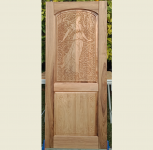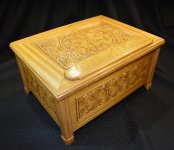HowardH
Member
- Joined
- Jan 23, 2007
- Messages
- 1,572
I just finished my last project and cleaned up the shop this afternoon. Tools back in their Systainers, saw dust blown out into the driveway, stuff put back in the cabinets, etc. I don't have anything else scheduled for awhile although my wife told me I need to build a toy chest for the daughter of a friend of ours. I was curious as to how long any of you guys will go between projects? I always feel a bit guilty if I don't have something going on regular schedule, mostly because of the well into 5 figure investment I have in tools. Other than for work or medical reasons, how long has your longest stretch between projects?



